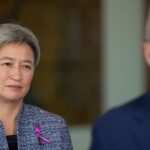Funding public hospitals
Our health system is facing ongoing challenges and will again be one of the big election issues this year. President of the Australian Medical Association (AMA), Professor Brian Owler, says we have reached a crisis point in public hospital funding that puts patients at risk.
Health is often a prominent issue in elections. It will be a major point of difference between the major parties in the upcoming 2016 Federal Election, with public hospital funding a key battleground.
The Coalition Government has abandoned its promise to make public hospital funding sustainable and to contribute an equal share towards growth in public hospital costs. Instead, it is shifting this responsibility to the States and Territories, which do not have the resources to meet the demand.
Without adequate funding, the States and Territories will have no choice but to reduce public hospital services, putting patients at risk.
From July 2017, the Commonwealth will strictly limit its contribution to public hospital costs. Growth in Commonwealth funding will be restricted to indexation, using the Consumer Price Index (CPI) and population growth only.
This is a sharp contrast with current funding under the National Health Reform Agreement (2011), where all governments agreed to fund actual public hospital activity using a national efficient price and with guaranteed minimum Commonwealth funding in the transition period.
The Commonwealth Treasury advised the Senate Economics Committee the change to indexation and population growth will reduce projected Commonwealth funding to the states and territories by $57 billion over the period 2017-18 to 2024-25.
In the meantime, Commonwealth funding for public hospitals in the 2015-16 Budget has been reduced by $423 million for the three years to 2017-18. The downward trend continued, with a further reduction of $31 million to 2018-19 in the December 2015 Budget update.
By any measure, we have reached a crisis point in public hospital funding.
Public hospitals provide essential healthcare services across the community, services that are crucial to the health of our population, and thereby to workforce and social participation.
Funding public hospitals is not discretionary.
The Government’s ongoing justification for its extreme health savings measures, including cuts to public hospital funding, has been that Australia’s health spending is unsustainable.
This is simply not substantiated by the evidence.
The Government’s own health expenditure figures (2013-14) show Australia has achieved two years of modest, sustainable growth.
We have seen 3.1 per cent growth in total heath expenditure in 2013-14 on the back of 1.1 per cent growth in 2012-13; a year with the lowest growth rate in health expenditure since the Government began reporting it in the mid-1980s.
There have now been two years where growth in health expenditure has been well below the long-term average annual growth of 5 per cent over the last decade.
According to the health expenditure report, health was 9.8 per cent of Australia’s GDP in 2013-14, which is stable and sustainable when compared with the 10-year average of 9.12 per cent.
In the 2014-15 Commonwealth Budget, health was 16.13 per cent of the total, down from 18.09 per cent in 2006-07. It reduced further in the 2015-16 Budget, representing only 15.97 per cent of the total Commonwealth Budget.
Clearly, total health spending is not out of control.
The AMA Public Hospitals Report Card 2016 showed that, against key measures, the performance of our public hospitals is also virtually stagnant or, in many cases, declining.
The most recent data shows waiting times are largely static, with only very minor improvement. Emergency Department (ED) waiting times have worsened. The percentage of ED patients treated in four hours has not changed, and is well below target. Elective surgery waiting times and treatment targets are largely unchanged. Bed number ratios have also deteriorated.
Without sufficient funding to increase capacity, public hospitals will never meet the targets set by governments, and patients will wait longer for treatment.
Services provided by public hospitals are essential. Funding for public hospitals is also essential.
Commonwealth funding must ensure public hospitals have sufficient capacity to meet the community’s requirements for health care. The people of Australia have a right to it. And they will vote for it.
Professor Brian K Owler is President of the Federal Australian Medical Association (AMA). He is a Consultant Neurosurgeon at the Children’s Hospital at Westmead, Westmead Private, Sydney Adventist Hospital at Wahroonga, and Norwest Private Hospital. He has a PhD from the University of Sydney and spent 18 months performing research at the Academic Neurosurgery Unit at the University of Cambridge. Professor Owler has a particular interest in public health advocacy. He worked with the Roads and Maritime Service to develop the “Don’t Rush” advertising campaign targeted at reducing speed-related road accidents in NSW. He led the AMA (NSW) in campaigns with a number of key organisations and the State Government to reduce the incidence of preventable deaths and injuries in children, primarily in the areas of pool safety and falls from residential buildings in NSW and alcohol-related violence. As Federal AMA President, Professor Owler successfully led the AMA campaign against the proposed GP co-payment, advocated for the restoration of hospital funding that was cut in the 2014 Budget, and urged the Government to send assistance to control the Ebola virus outbreak in West Africa. Professsor Owler has a strong interest in Indigenous Health. He Chairs the AMA Taskforce on Indigenous health, and has made two visits to remote communities to inspect the state of health services available to Aboriginal people and Torres Strait Islanders.













